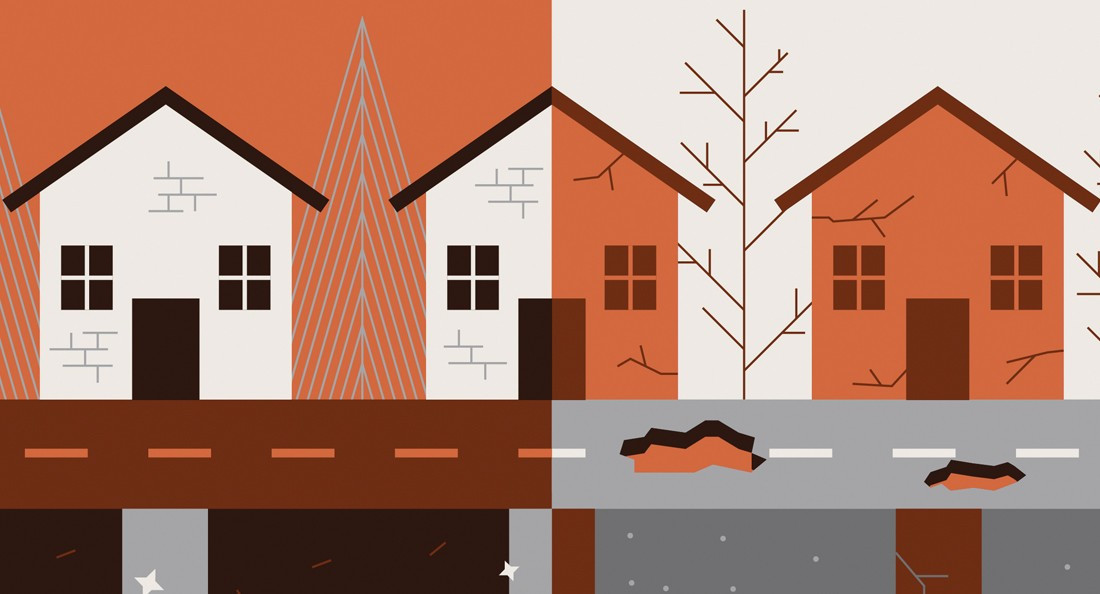Does sprawl take away from the downtown?
Retired professor argues development spreads city services too thin
Sprawling suburbs mean Winnipeg’s inner city faces decaying roads, sidewalks and water pipes, says retired University of Winnipeg political science professor Christopher Leo.
It costs money to extend pipes and roads to new developments, Leo says, and it is very inefficient if this infrastructure is passing through open fields and undeveloped areas to get to fringe developments.
A key case in point is the new subdivision of Waverley West. Developers, 10 or 15 years ago, made the argument to the City that, given population growth, there would be a “critical lot shortage” without new development, he says. So the formerly agricultural land of Waverley West was developed into a new suburb – with all the associated costs, Leo emphasizes.
“Downtown streets deteriorate, and sometimes even sinkholes develop, because the sewer collapses. That’s how well the old infrastructure is maintained, and yet (the City is) building vast amounts of unnecessary new infrastructure,” Leo says.
Emily Wiebe has lived in West Broadway for the past seven years and feels the impacts of core area infrastructure challenges. She notices a lot of cracks in the sidewalk, which is particularly difficult, as her partner is paralyzed from the waist down and requires the use of a wheelchair.
“In a wheelchair, you really notice it,” she says.
Wiebe notes that the Broadway Street sidewalk has particularly bad cracks and unevenness in the stretch between Osborne Street and Sherbrook Street. She says she especially notices cracks and defects in the sidewalk when carrying home groceries in a personal cart.
“There’s a lot of construction, but it’s always on the road. It’s never on the sidewalk,” Wiebe says.
She says, based on her experience, sidewalk defects are a problem everywhere, but she feels it is particularly evident in the inner city.
Leo believes these types of core-area infrastructure challenges would be less severe with better municipal planning policies in place.
If preventing a “critical lot shortage” was the policy objective, he believes it could be done more efficiently by developing the Transcona West area, which is the region between the developed, old Transcona neighbourhood and Elmwood.
It was undeveloped at the time of the Waverley West decision, but there has since been some development on the fringes of this area, Leo says. In 2016 StreetSide Developments opened condos in Devonshire Village, a new development in Transcona West.
“The city has control over where new subdivisions get located,” he says.
Leo argues that had the city insisted that developers build housing in Transcona West before creating any new subdivisions in southwestern Winnipeg, then it would have been less costly. This is, he says, because some city infrastructure already runs through Transcona West to get to the developed part of Transcona.
Leo says he understands why developers would want to create a new subdivision in southwest Winnipeg. He notes they likely find it easier to market new subdivisions in that area than they would to drum up homebuyer enthusiasm for Transcona West.
However, Leo says the city isn’t being paid to make life easier for developers. It’s up to developers to make subdivisions attractive, so they can sell them.
Leo feels this is mainly an issue of mature areas having older infrastructure, rather than anything related to the socioeconomic status of the neighbourhoods in question. He argues that the city has a “unified tax base” since the old City of Winnipeg was merged with its suburbs in 1972, so neighbourhood wealth shouldn’t play a role in infrastructure maintenance.
Wiebe, however, feels differently.
“It’s always the poorest areas that get neglected,” she says.
Published in Volume 72, Number 2 of The Uniter (September 14, 2017)







